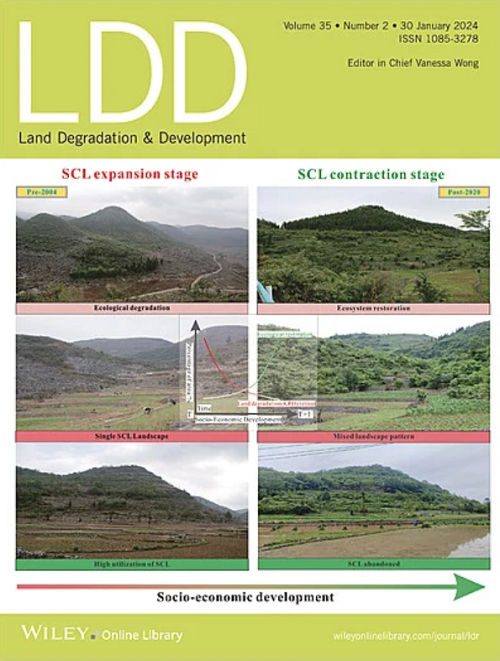A Quantitative Basis for Intersource Differences in Tracer Concentrations for Accurate Sediment Source Fingerprinting
IF 3.6
2区 农林科学
Q2 ENVIRONMENTAL SCIENCES
引用次数: 0
Abstract
Sediment source fingerprinting provides support for targeted soil erosion control and land degradation mitigation. Tracer selection and source classification are the main considerations in this approach. However, the impact of tracer concentration divergences among different sediment sources on the accuracy of source apportionment remains uncertain and has not been quantitatively investigated. Here, artificial and virtual mixtures were created to explore the impact of low and high source differences on the accuracy of relative source apportionment. Additionally, global geochemical property data based on different source classification methods were collected to analyze the reliability of source classification. The results reveal that as the difference in tracer concentration between sources decreases (from 30% to 2%), the accuracy of source apportionment significantly decreased, with the mean absolute error (MAE) ranging from 5.9% to 60.1%. Furthermore, a relative deviation in tracer concentration > 10% between sources is suggested for reliable source classifications. Notably, approximately 40% of the existing papers exhibit potential issues due to low tracer concentration divergences between sources. The adoption of sediment source classification based on land use should be cautiously approached until tracer concentration divergences among major sources are examined. For catchments lacking long‐term stable vegetation, source classification methods based on geological properties are recommended. Finally, we recommend the consideration of clustering methods or alterative tracers for specific study areas to improve the accuracy of sediment fingerprinting.求助全文
约1分钟内获得全文
求助全文
来源期刊

Land Degradation & Development
农林科学-环境科学
CiteScore
7.70
自引率
8.50%
发文量
379
审稿时长
5.5 months
期刊介绍:
Land Degradation & Development is an international journal which seeks to promote rational study of the recognition, monitoring, control and rehabilitation of degradation in terrestrial environments. The journal focuses on:
- what land degradation is;
- what causes land degradation;
- the impacts of land degradation
- the scale of land degradation;
- the history, current status or future trends of land degradation;
- avoidance, mitigation and control of land degradation;
- remedial actions to rehabilitate or restore degraded land;
- sustainable land management.
 求助内容:
求助内容: 应助结果提醒方式:
应助结果提醒方式:


